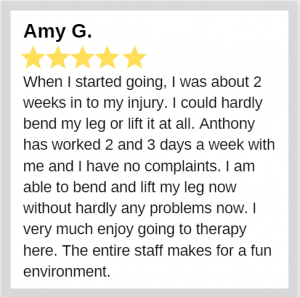Many people ask themselves, “What does a sports physical therapist do?” Sports injuries are among the first things that spring to mind when most people think of physical therapists as a possible cause to seek therapy. While a physical therapist may treat sports injuries, this is not the same as becoming a sports physical therapist.
Physical therapy and sports physical therapy are separate disciplines within the same profession, with sports physical therapists concentrating especially on athletes and their injuries and preventive requirements. Sports physical therapy is a distinct field that may be tremendously useful to big groups of people.
What Is Sports Physical Therapy?
When physical therapists are certified and educated to specialize in athletic training and therapy, this is referred to as sports physical therapy, or simply sports therapy. While any physical therapist may assist with injury, this technique incorporates not just an understanding of particular sports injuries but also knowledge of the physiological components of sports and exercise.

This field may treat injuries and build programs to prevent injuries from arising in the first place by mixing exercise science and biomechanics.
Each sports physical treatment plan is tailored not just to the patient but also to the activities and sports in which they engage. Sports physical therapy can accommodate for the differences in demands between a swimmer, a runner, and a professional football player.
Who Is Sports Physical Therapy For?
When discussing sports physical therapy, an athlete does not have to be a professional athlete or even an expert. Sports physical therapists maximize the health of everyone, from all-star athletes to toddlers on local baseball teams. Improving your personal record may incentivize seeing a sports physical therapist, and anybody who is hurt while participating in sports might benefit from the therapy.
What Does A Sports Physical Therapist Do?
The American Physical Therapy Association (APTA) describes a physical therapist as a qualified practitioner who helps patients regain mobility and minimize discomfort. These practitioners are more generalists, seeing patients from all demographics for a number of reasons. Physical therapists may be called in for pre- and post-surgical rehabilitation, injury treatment, or chronic illness management, with the objective of restoring physical mobility and returning patients to their everyday activities.
A sports physical therapist, on the other hand, is characterized as a specialist who gives therapy to avoid injury while also assisting in recovery. The objective is to assist patients to reach peak performance in sports and in everyday life. Sports injury experts are professionals who treat injuries incurred while participating in sports. Sports physical therapy and sports medicine are both subspecialties of sports injury.
Prevention Of Injuries
Most athletes seek physical therapy after being injured or developing painful problems as a consequence of participating in sports. Although it’s the right thing to do when a problem arises, one of the most significant advantages of sports physical therapy is the ability to establish strategies that limit the likelihood of injury arising in the first place.

A sports physical therapist’s grasp of exercise science, physiology, and biomechanics makes them especially qualified for this job. These specialists can detect muscular instability and weakness that is likely to result in an injury, even if it has not yet occurred. With this information, they may precisely design preventative programs targeting these weaknesses. This might include particular warm-up and cool-down activities, as well as off-day workouts. They may also teach players about optimal posture and mobility, utilizing technologies such as gait analysis to measure this. Other functional tests and evaluations may be applied as well.
Many major sports clubs hire a full-time sports physical therapist to provide injury prevention advice and conduct injury prevention programs. This tight interaction enables the provider to detect injuries early, such as changes in posture or weight distribution. Early injury detection may be the difference between missing a single game or an entire season, which is why these clubs place such a high emphasis on it. Athletes’ treatment and preventative strategies are developed in collaboration with athletic trainers by sports physical therapists.
Certain sorts of analysis may be created to understand how an athlete’s body works and to give suggestions for safely boosting performance. Running analysis and golf swing analysis are two typical types of this, which use modern technology to profile an athlete’s current performance, establish an improvement program and training routine, and track improvements over time.
Injuries Evaluating And Assessing
When prevention is not an option, sports physical therapists may thoroughly examine the injury to devise the best course of action. They begin with a thorough physical examination, including an assessment of any existing discomfort. This enables them to pinpoint the source of the discomfort and precisely diagnose the patient, laying the groundwork for successful treatment strategies.
The first therapy will concentrate on pain relief and control. Once this is accomplished, they may go on to functional and mobility testing, which will reveal any remaining limitations. These may be the outcome of the damage or the source of the injury at first, but they will be the focus of future improvements.

A sports physical therapist may utilize film and replay to examine how stress affects the body during the activity to identify this. For example, if a sport includes leaping and exerts stress on the knee, they may extensively examine the knee for deficiencies that might lead to damage. This phase mainly depends on biomechanics and the particular athlete.
The fact that these are not one-time occurrences is a key aspect of this profession. Goals and outcomes are monitored and updated as required during initial treatment plans, with continuous therapy employed to handle any changes or developing requirements over time. These gadgets are used to keep athletes safe and healthy even after the injury has healed.
The Advantages of Working with Sports Physical Therapists
Athletes must maintain a high level of physique and performance in order to succeed. The strain on their bodies renders them vulnerable to injury in the activities they like. When this occurs, physical therapy plays an important role in healing by providing personalized training regimens targeted to the injuries.
Furthermore, sports physiotherapists may design training programs to improve strength and flexibility. Here are seven advantages of using physical therapy as an athlete.
Preventing Athletic Injuries
Incorrect training approaches may result in torn ligaments, muscle damage, and even fractured bones. A sports physiotherapist may examine your strengths and weaknesses and create a personalized training program for you. The data gathered is utilized to create a program that may lower your risks of experiencing strains, tension, muscular cramps, or damaged ligaments.
Pain Relief Immediately
Some physically demanding sports, such as rugby and football, may need immediate pain relief for the athletes. Hot and cold packs, taping of injured portions, and dry needling are all physical therapy treatments that may help keep the discomfort at bay. Physiotherapy lowers muscle tension by addressing the cause of discomfort before the athlete is subjected to more testing. Rapid pain therapies assist sportsmen to lessen their dependency on narcotic medicines for pain management.
Athletic Injuries Treatment
While sports physiotherapists do all possible to avoid injuries, accidents can occur. Contact sports injuries are often more serious and may need surgery. However, as part of the therapy, physical therapists may design a treatment plan that ensures a quick recovery at a lesser cost. According to recent research, physical therapy reduces patient expenditures by almost 72% since most injuries might be managed without the need for specialist surgery.

Relaxation
After a hard day on the field, a cool-down is equally as necessary as a warm-up. Sports physical therapy is essential for players because it allows them to relax after a rigorous session. Unwinding assists athletes in relaxing their muscles, replenishing energy, and having a healthier physique overall.
Physical Power
Some sports, such as boxing, need competitors to acquire physiques in order to withstand the punches delivered during contests. You may get therapy from a physical therapist to strengthen your ligaments, joints, and muscles. It may also assist you in improving your performance and realizing your full potential. You can sustain considerable physical stress during matches if you have increased physical strength.
Flexibility Of Muscles And Joints
Joint flexion is an important factor in determining an athlete’s potential. Almost all sports need some degree of flexibility, with the demand varied according to the demands of each discipline. Increased flexibility is critical for swimmers and gymnasts to achieve peak performance. A flexible physique may also help to avoid injuries.
Cardiovascular Advantages
Physical treatment may provide additional benefits, such as improved aerobic fitness. Cardio activities, which improve your endurance and breathing patterns, may be included in the suggested training plans. Cardio activities also help the athlete’s general well-being.
Conclusion
If you’re wondering, “What does a sports physical therapist do?” Working with a sports physical therapist has several advantages. Regular exercise may assist athletes in refreshing and maintaining their bodies. Physical therapy in sports also aids in the maintenance of muscular strength, flexibility, balance, and posture, all of which contribute to peak performance.

